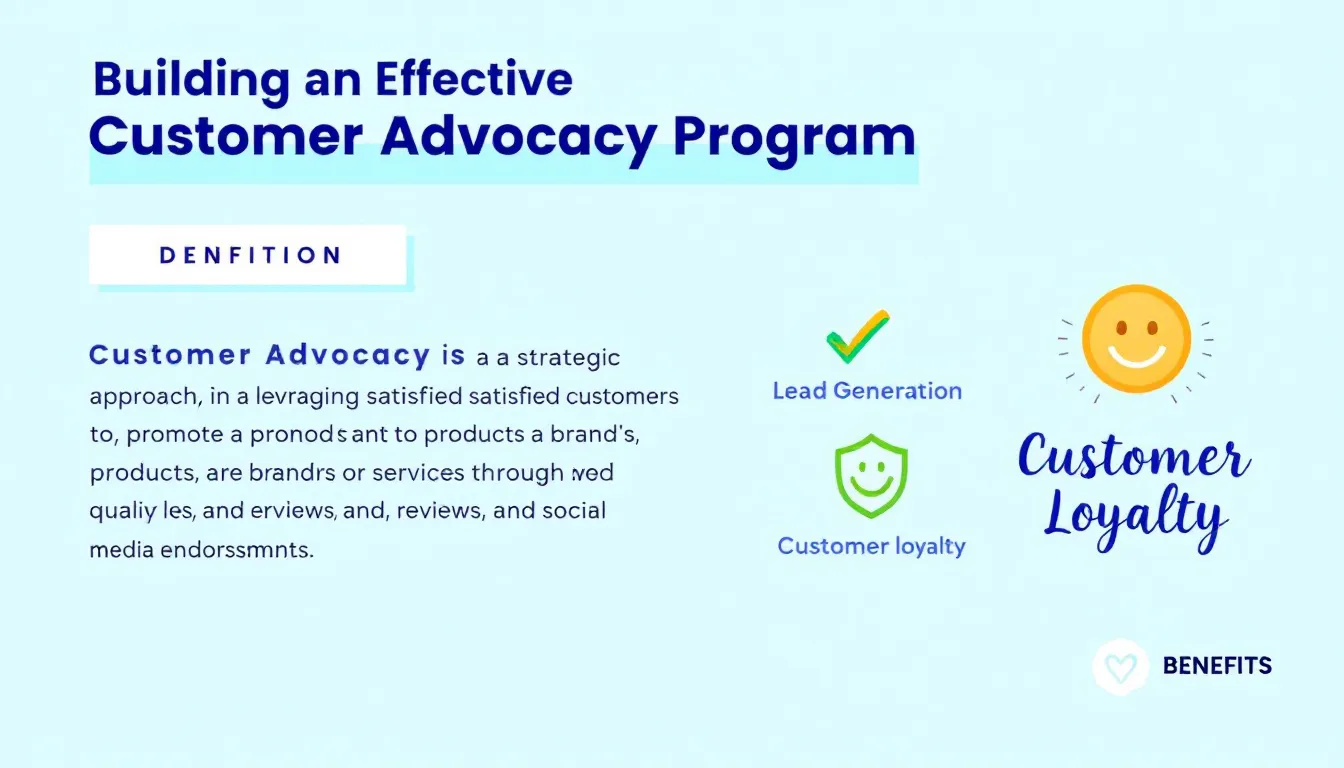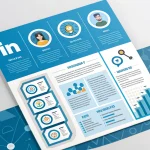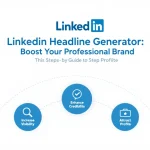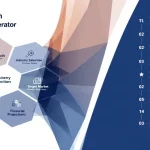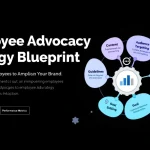Customer Advocacy Program Generator
Is this tool helpful?
How to Use the Customer Advocacy Program Generator Effectively
To make the most of our Customer Advocacy Program Generator, follow these steps:
- Enter your company name: In the “Name of the company” field, input your organization’s official name. For example, “TechInnovate Solutions”.
- Describe your product or service: In the “Brief description of the company’s product or service” textarea, provide a concise overview of your main offering. For instance, “We offer a cloud-based project management software that streamlines team collaboration and task tracking.”
- Identify customer pain points: List the key challenges your customers face that your product solves in the “Common pain points that the company’s product or service addresses” textarea. An example could be “Difficulty in tracking project progress, lack of team communication, missed deadlines.”
- Define your target audience: In the “Description of the target audience for lead generation” textarea, describe your ideal customer profile. For example, “Small to medium-sized businesses in the tech industry, project managers, and team leaders looking to improve productivity.”
- Generate the program: Click the “Generate Customer Advocacy Program” button to create your customized advocacy strategy.
- Review and copy the results: Once generated, review the program details in the results section and use the “Copy to Clipboard” button to save the content for further use.
Understanding Customer Advocacy Programs: Definition, Purpose, and Benefits
A customer advocacy program is a strategic initiative designed to empower and encourage satisfied customers to become vocal supporters of your brand, product, or service. The primary purpose of such a program is to leverage the authentic experiences and testimonials of your happy customers to attract new leads, build trust, and enhance your company’s reputation.
Key Components of a Customer Advocacy Program
- Identification of loyal customers
- Creation of engaging content featuring customer success stories
- Facilitation of peer-to-peer recommendations
- Incentives for customer participation
- Measurement and tracking of program success
The Importance of Customer Advocacy in Modern Marketing
In today’s digital age, where consumers are bombarded with advertisements and promotional content, the power of genuine customer recommendations cannot be overstated. According to Nielsen, 92% of consumers trust recommendations from friends and family over all other forms of advertising. This statistic underscores the immense potential of a well-executed customer advocacy program.
Benefits of Using the Customer Advocacy Program Generator
1. Time and Resource Efficiency
Developing a comprehensive customer advocacy program from scratch can be time-consuming and resource-intensive. Our generator streamlines this process, allowing you to create a tailored program in minutes rather than weeks or months. This efficiency enables you to:
- Quickly implement and iterate on your advocacy strategy
- Allocate more time to execution rather than planning
- Respond rapidly to market changes or customer feedback
2. Customization and Relevance
By inputting specific details about your company, product, and target audience, the generator creates a program that is highly relevant to your unique business context. This customization ensures that:
- Your advocacy program aligns with your brand voice and values
- The strategies suggested are appropriate for your industry and customer base
- The program addresses the specific pain points and motivations of your customers
3. Structured Approach to Advocacy
The generator provides a structured framework for your advocacy program, ensuring that you cover all essential elements. This structured approach helps you:
- Identify and prioritize key advocacy initiatives
- Create a balanced program that addresses various aspects of customer engagement
- Implement best practices in customer advocacy
4. Increased Lead Generation and Conversion
A well-designed customer advocacy program can significantly boost your lead generation efforts. By leveraging the power of satisfied customers, you can:
- Attract high-quality leads through authentic testimonials and case studies
- Increase conversion rates as potential customers trust peer recommendations
- Expand your reach through customer referrals and word-of-mouth marketing
5. Enhanced Customer Loyalty and Retention
Engaging customers in an advocacy program not only helps attract new leads but also strengthens relationships with existing customers. Benefits include:
- Increased customer loyalty as advocates feel valued and heard
- Higher customer lifetime value through prolonged engagement
- Reduced churn rates as customers become more invested in your brand’s success
Addressing User Needs and Solving Specific Problems
The Customer Advocacy Program Generator is designed to address several key challenges faced by businesses looking to leverage their satisfied customers for growth:
1. Lack of Structure in Advocacy Efforts
Many businesses recognize the value of customer advocacy but struggle to create a structured program. Our generator solves this by providing a clear framework based on your inputs. For example, if you input “TechSoft Solutions” as your company name and describe your product as “AI-powered data analytics software for financial institutions,” the generator might suggest:
- Creating a “TechSoft Innovators” community for power users
- Developing case studies highlighting how banks improved decision-making using your software
- Implementing a referral program with incentives tailored to finance professionals
2. Difficulty in Identifying Relevant Advocacy Activities
Different industries and customer bases require different advocacy approaches. By inputting your specific pain points and target audience, the generator tailors its recommendations. For instance, if you mention “data security concerns” as a pain point and “enterprise-level financial institutions” as your target audience, the program might suggest:
- Organizing exclusive roundtable events for CISOs to discuss data security best practices
- Creating a certification program for “TechSoft Security Experts”
- Facilitating peer-to-peer reviews on industry-specific platforms
3. Aligning Advocacy Efforts with Business Goals
The generator helps bridge the gap between customer advocacy and business objectives. If your input indicates a focus on expanding into new markets, the program might recommend:
- Identifying and nurturing advocates in target geographical regions
- Creating localized success stories and testimonials
- Developing a “Global Ambassadors” program for international customers
Practical Applications and Use Cases
Use Case 1: SaaS Company Expanding Customer Base
Let’s consider a SaaS company, “CloudTask,” that offers project management software and wants to expand its customer base among small businesses. Their inputs might look like this:
- Company Name: CloudTask
- Product Description: Cloud-based project management software for small businesses
- Pain Points: Difficulty in team collaboration, budget overruns, missed deadlines
- Target Audience: Small business owners and project managers in service industries
The generated advocacy program might include:
- A “CloudTask Champions” program that recognizes and rewards customers who consistently achieve project success using the software
- A series of video testimonials featuring small business owners discussing how CloudTask helped them overcome specific challenges
- A referral program that offers discounts on annual subscriptions for successful referrals
- A customer-led webinar series where successful users share their best practices and tips
- A “Small Business Success” blog featuring customer stories and practical advice
Use Case 2: B2B Manufacturing Company Entering New Markets
Consider “IndustrialTech,” a B2B company manufacturing industrial sensors looking to enter new international markets. Their inputs might be:
- Company Name: IndustrialTech
- Product Description: High-precision industrial sensors for manufacturing automation
- Pain Points: Inaccurate data collection, equipment downtime, integration challenges with existing systems
- Target Audience: Manufacturing plant managers and automation engineers in automotive and aerospace industries
The generated advocacy program could include:
- An “IndustrialTech Innovators” program that highlights customers using the sensors in innovative ways across different countries
- Case studies translated into multiple languages, showcasing ROI and efficiency gains in various manufacturing settings
- A global customer advisory board with representatives from different regions to provide insights and act as brand ambassadors
- An annual “Sensor Technology Summit” bringing together customers, prospects, and industry experts
- A partner program that incentivizes system integrators to recommend IndustrialTech sensors
Frequently Asked Questions (FAQ)
Q1: How long does it take to implement a customer advocacy program?
A: The implementation time can vary depending on the complexity of the program and your organization’s resources. However, using our generator can significantly reduce the planning phase. Typically, you can start with basic elements within a few weeks and gradually expand the program over 3-6 months.
Q2: How do I identify potential advocates among my customers?
A: Look for customers who have experienced significant success with your product, frequently engage with your brand, or have already shown a willingness to provide testimonials or referrals. Customer satisfaction surveys, NPS scores, and usage data can help identify potential advocates.
Q3: What types of incentives work best for customer advocates?
A: Effective incentives often go beyond monetary rewards. Consider exclusive access to new features, recognition in industry publications, speaking opportunities at events, or personalized professional development sessions. The key is to offer incentives that align with your advocates’ interests and professional goals.
Q4: How can I measure the success of my customer advocacy program?
A: Key metrics to track include the number of active advocates, referral rates, conversion rates from advocate-generated leads, social media mentions, and the impact on customer retention rates. Additionally, measure the content generated by advocates and its reach.
Q5: Can small businesses benefit from customer advocacy programs?
A: Absolutely! Small businesses often have close relationships with their customers, which can be leveraged for powerful advocacy. Start with simple initiatives like collecting testimonials or encouraging social media sharing, and grow your program as your business expands.
Q6: How often should I update my customer advocacy program?
A: Regular reviews and updates are crucial. Aim to assess your program quarterly and make minor adjustments as needed. Conduct a more comprehensive review annually to ensure your program aligns with your evolving business goals and customer needs.
Q7: What if my customers are in highly regulated industries?
A: For customers in regulated industries, focus on creating advocacy opportunities that comply with industry regulations. This might include anonymous case studies, private peer-to-peer referrals, or industry-specific event participation. Always ensure your advocacy activities adhere to relevant compliance requirements.
Q8: How can I encourage reluctant customers to become advocates?
A: Start by understanding their hesitations. Often, customers may be willing to advocate but are unsure how to start. Provide clear, easy ways to participate, such as quick surveys or social media templates. Showcase the benefits of advocacy, both to their professional growth and to the community they’d be helping.
Q9: Can customer advocacy programs work for B2B companies?
A: Yes, customer advocacy can be particularly powerful in B2B contexts. B2B purchases often involve higher stakes and longer decision processes, making peer recommendations extremely valuable. Focus on creating in-depth case studies, facilitating peer-to-peer connections, and leveraging advocates in industry events and content.
Q10: How do I balance showcasing customer success stories while respecting their privacy?
A: Always prioritize customer comfort and privacy. Obtain explicit permission before sharing any customer information or stories. Offer options for anonymity in case studies if needed. Develop clear guidelines on what information can be shared and how, and always give customers final approval on any content featuring them.
By leveraging the Customer Advocacy Program Generator and following the insights provided in this guide, you can create a robust, effective advocacy strategy that not only attracts new leads but also strengthens your relationships with existing customers. Remember, the most successful advocacy programs are those that genuinely value and showcase customer experiences while aligning with your overall business objectives.
Important Disclaimer
The calculations, results, and content provided by our tools are not guaranteed to be accurate, complete, or reliable. Users are responsible for verifying and interpreting the results. Our content and tools may contain errors, biases, or inconsistencies. Do not enter personal data, sensitive information, or personally identifiable information in our web forms or tools. Such data entry violates our terms of service and may result in unauthorized disclosure to third parties. We reserve the right to save inputs and outputs from our tools for the purposes of error debugging, bias identification, and performance improvement. External companies providing AI models used in our tools may also save and process data in accordance with their own policies. By using our tools, you consent to this data collection and processing. We reserve the right to limit the usage of our tools based on current usability factors.
